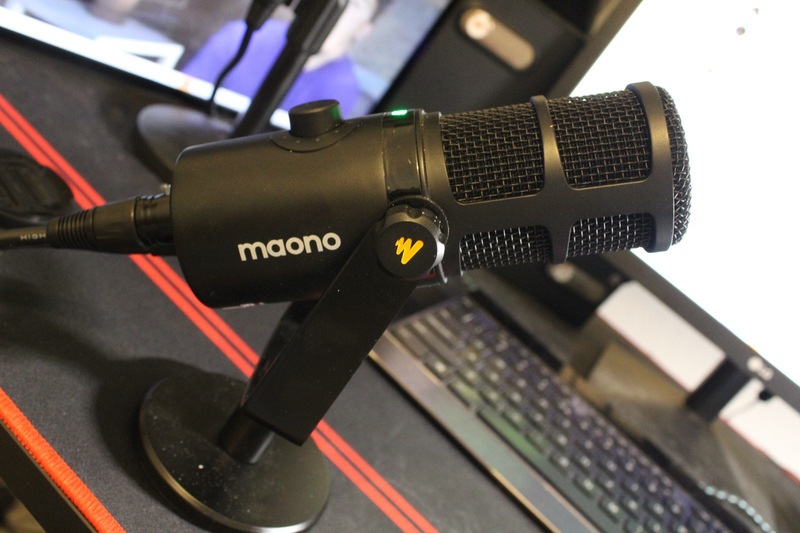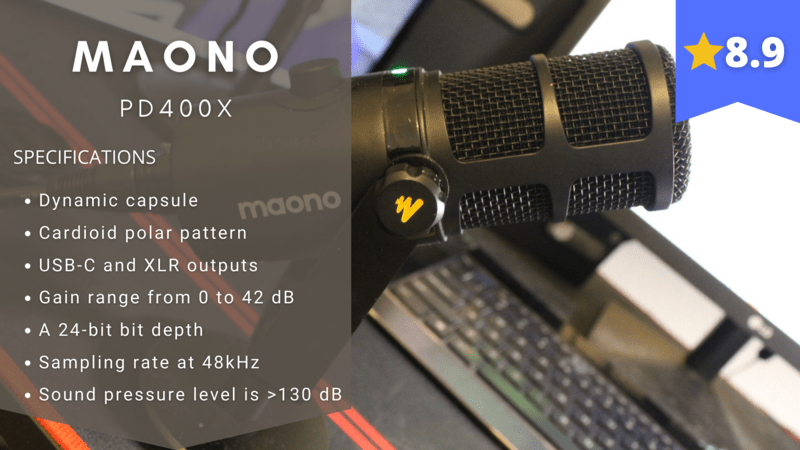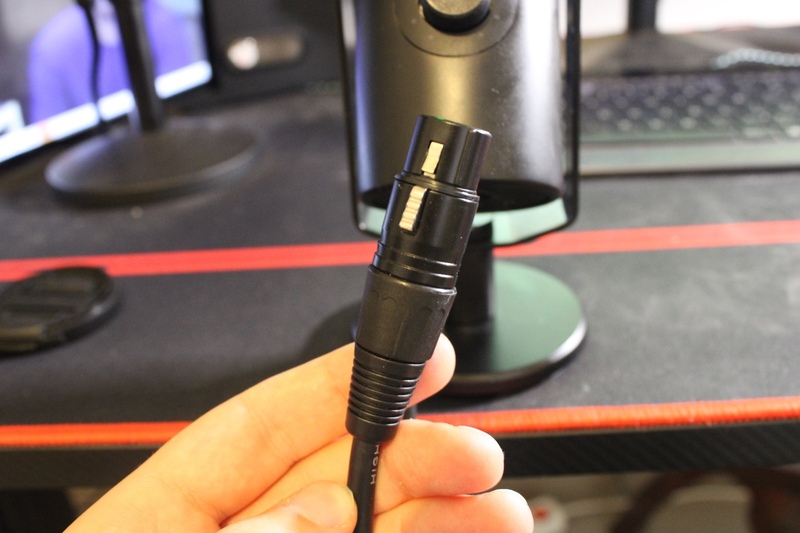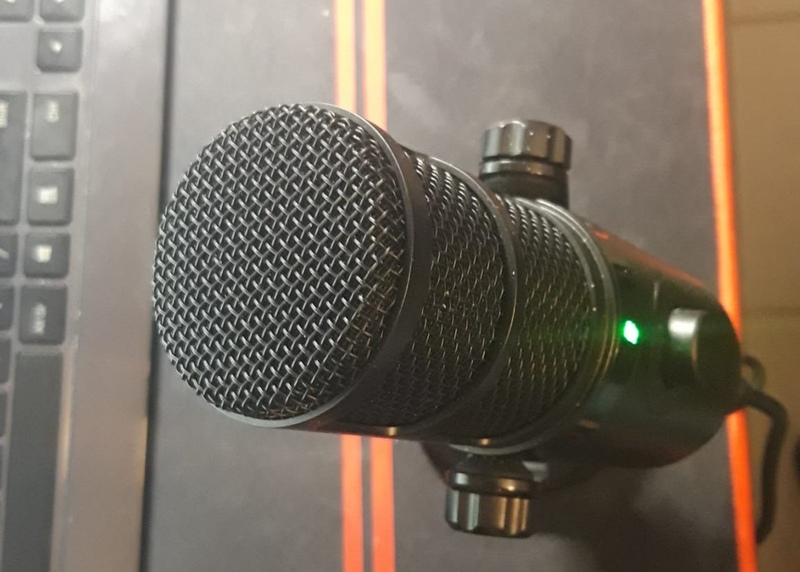When creating or updating your podcasting or streaming kit, choosing the right microphone will be your most crucial task.
In this Maono PD400X review, you will find that this microphone could be the perfect choice for you, primarily because of its cardioid audio output and user-friendly design.
Let’s explore the benefits this microphone will bring to your podcast or stream!


Stefan’s Take:
I’ve thoroughly tested this mic for multiple purposes while making several videos, podcasts, and a few live streams.
What I liked the most about it is how simplified the control and adjustment are with Maono Link software. Everything you need can be adjusted in the software interface, so I didn’t have to fiddle with the microphone itself too much.
Also, I was easily able to change the settings on the go while recording, which is extremely important because when you’re making a video or podcast, you want your viewers to hear everything loud and clear. Sometimes, there are unexpected interferences though, which require you to make some adjustments. This was quite simple to achieve with this mic.
| Audio Quality | 9 |
|---|---|
| Sensitivity | 8.5 |
| For Streaming? | 9 |
| Value | 9 |
Pros
- Comes with dual configurations
- Compatible audio processing software is included
- The headphone jack is built-in
- Great smart knob functions
Cons
- Output can come out a bit quiet
Table of Contents
Maono PD400X Features
The Maono PD400X includes several standard features typical of a dynamic microphone designed primarily for podcasting, but it also offers some that have proven to be excellent for streaming as well.
Here are the key points that stood out to me and that you should certainly consider if you decide to choose this mic.
XLR/USB Dual Mode
This microphone offers dual output options, featuring both XLR and USB outputs.

With dual mode, you can opt to record something both digitally and as an analog recording.
This microphone can connect to a variety of devices, including mobile devices, desktops, and standard audio interfaces.
You can use both modes simultaneously, recording with XLR and USB at the same time. However, be aware that some functions, such as phantom power, do not operate with the XLR cable.
To switch between these options, simply use the button located at the bottom of the microphone.
I found this quite easy to navigate; however, I must admit that I overlooked some features while recording through USB and XLR simultaneously.
The lack of a phantom power function necessitates the use of multiple cables, which is the main drawback.
Maono Link Software
Maono provides its proprietary software for managing its microphones, called Maono Link Software.
Downloading is simple; just visit their official website here and download the version for either Windows or Mac.
Here are the essential steps to follow when using Maono Link:
The interface of this software is highly user-friendly; I found it quite intuitive, and I believe this is not solely because of my prior experience with similar software.
Furthermore, the ability to control most options within the software, instead of continually adjusting the microphone itself, made the recording process considerably easier.
Multi-Function Compound Knob
The reason this microphone has a simple design is that a single compound knob controls several different functions.
With this single knob, I can adjust the monitor mix, microphone gain, and headphone volume.
This is not something often found in podcasting microphones, which usually feature multiple knobs for different settings.
If you don’t need all those physical knobs and can handle most adjustments through the software, then this option will be very useful.
One of my favorite features of this knob is its capability to control both the microphone and the headphones. Switching between these two modes only requires pressing and holding the knob for one second.
Dynamic Capsule

Microphones with dynamic capsules function based on electromagnetic induction, meaning that phantom power is unnecessary when connecting them.
The other type of microphone capsule is the condenser capsule. When deciding between dynamic and condenser mics, it is important to acknowledge that dynamic capsules provide several advantages.
First and foremost, they are very easy to handle.
Additionally, a dynamic mic can operate even when there are fluctuations in the magnetic field, a process essential for the mic to attain a frequency response.
Dynamic mics are known for their longevity and exceptional durability, attributed to their stiffness and relatively rigid structure.
All of these advantages of a dynamic microphone polar pattern have proven to be highly beneficial with the Maono PD400X mic, so you can anticipate similar results from this one.
Real-Time Monitoring
The smart knob on this dynamic microphone, combined with the software, enables you to monitor and adjust features in real-time while recording or streaming.
While this microphone is mainly advertised as a podcasting mic, it also serves as an excellent dynamic mic for streaming.
You can modify your stream and change settings while the camera is recording and broadcasting your stream.
I didn’t find it difficult or particularly complicated to manage everything, so I wouldn’t say it was a problem.
Just remember, to fully control the mic while doing something like that, you need to stay in digital recording mode by using the USB output rather than the XLR port.
1-Tap Mute
The one-tap mute feature is based on the mute button found on this microphone.
I appreciated this feature mainly because it operates as intended, regardless of the setup you are using.
To mute the microphone, make sure the indicator light changes from green to red.
To take it back and unmute the microphone, simply press the button again and wait for the indicator light to change from red to green.
Conclusion
Overall, this is an excellent microphone for both streaming and podcasting, and it is sure to last you a significant amount of time.
While I wouldn’t assert that the high price point is completely justified, I can say that if you have the budget to invest in your streaming equipment, this is a product worth considering.
FAQ
Is Maono Link available on iOS or Android?
The Maono Link software is available as a mobile device version as well. You can find download links u003ca href=u0022https://www.maono.com/pages/maono-link-softwareu0022 target=u0022_blanku0022 rel=u0022noreferrer noopeneru0022u003ehereu003c/au003e.
Can I use mute in XLR mode?
When working in the XLR mode, a lot of the microphone functions become unavailable, as this is the way to record an analog audio file.u003cbru003eu003cbru003eThis means that the mute option can’t be used while working with XLR mode.
Do I have to install Maono Link to use PD400X?
The Maono PD400X can be used with any kind of audio interface and microphone control software, not only the Maono Link.u003cbru003eu003cbru003eSo, in case this software doesn’t work for you, you will be able to use it with any other preference that you have.

